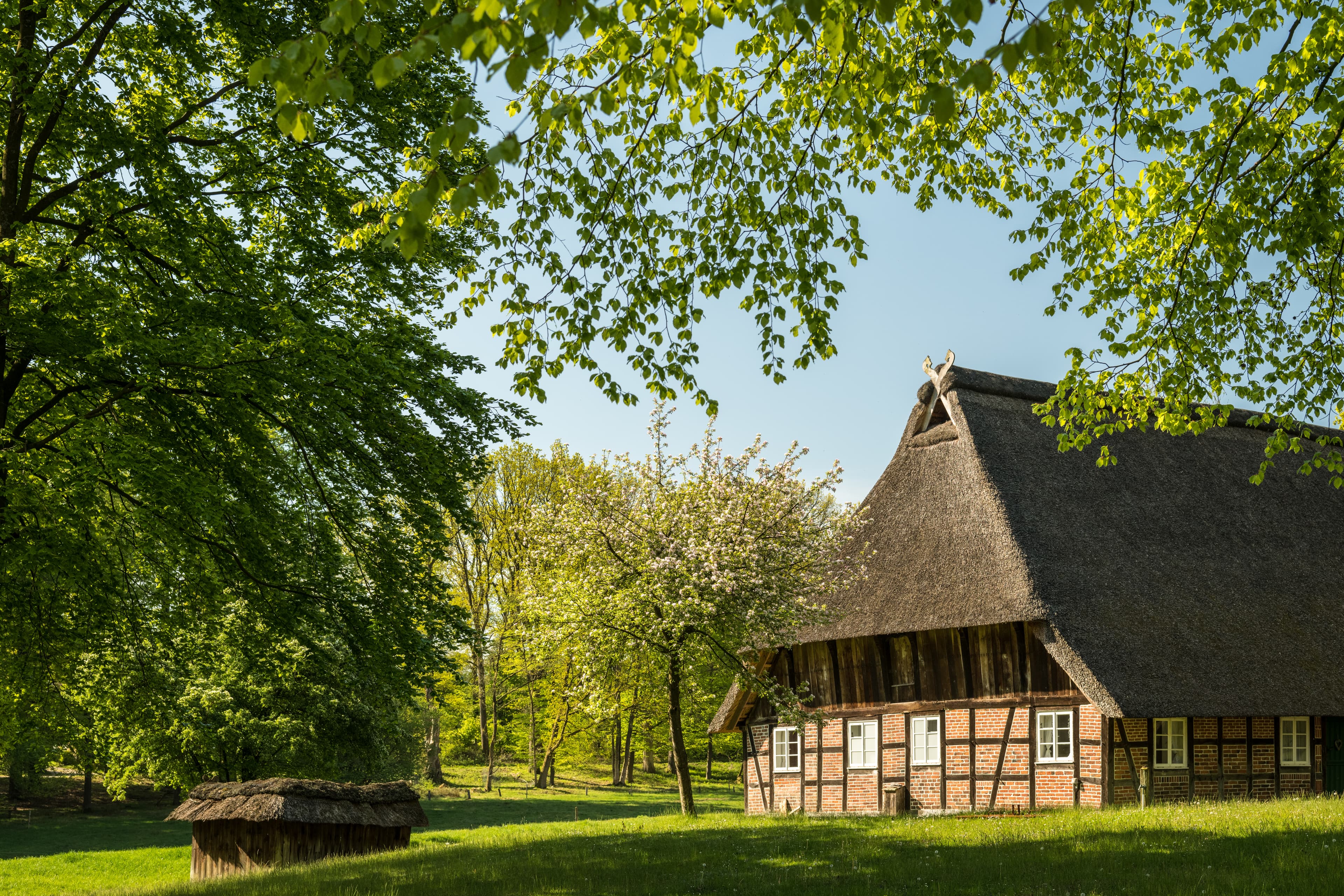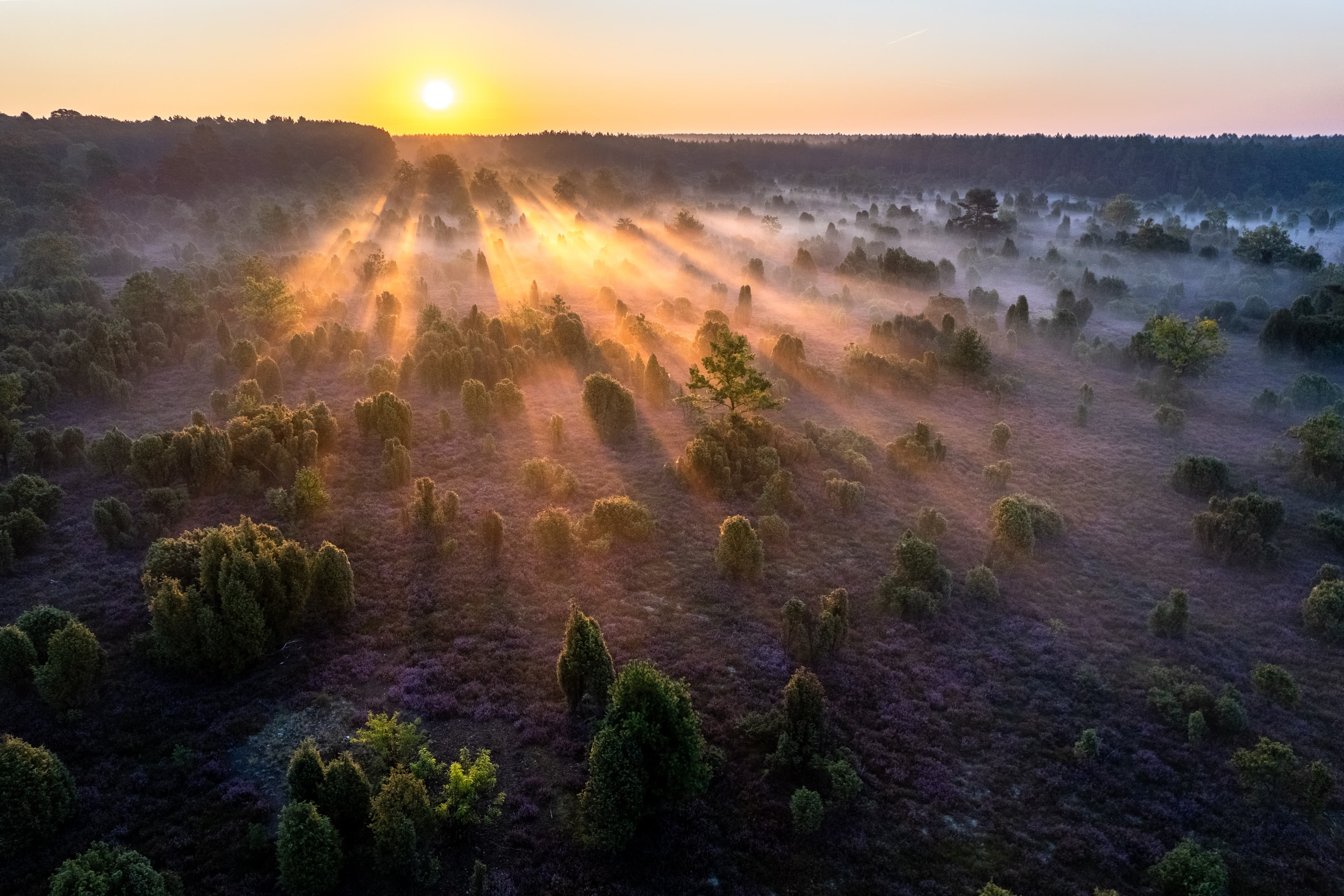©Dennis Karjetta
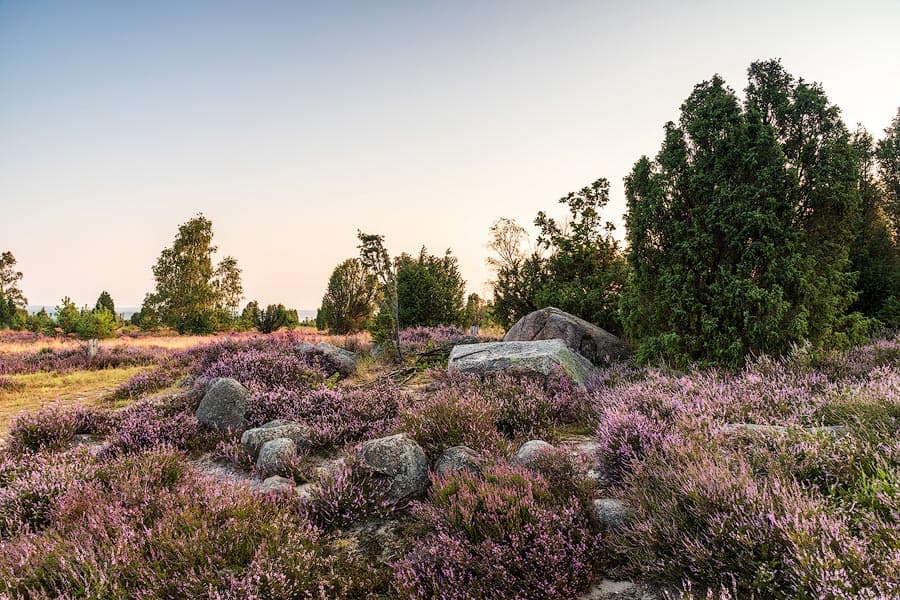
©Dennis Karjetta
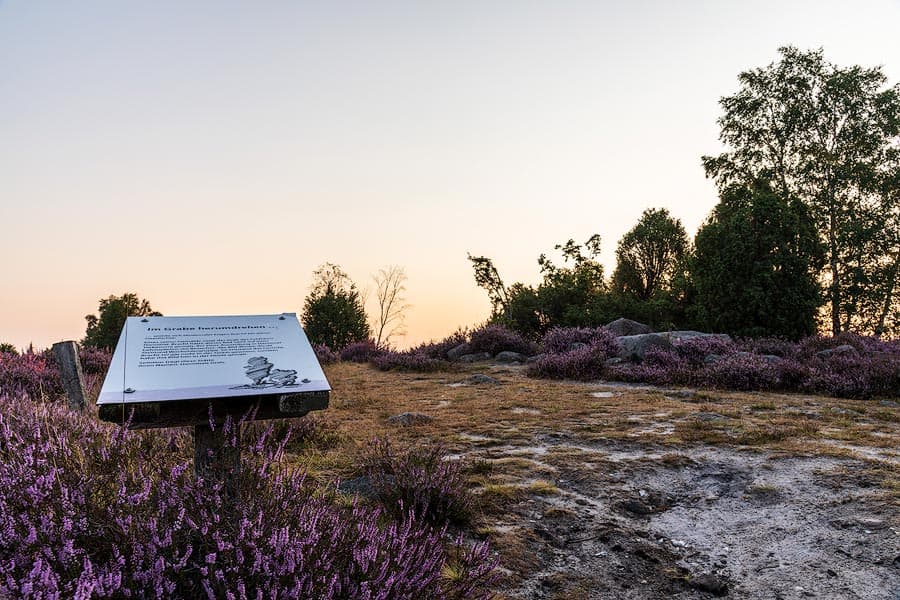
©Dennis Karjetta
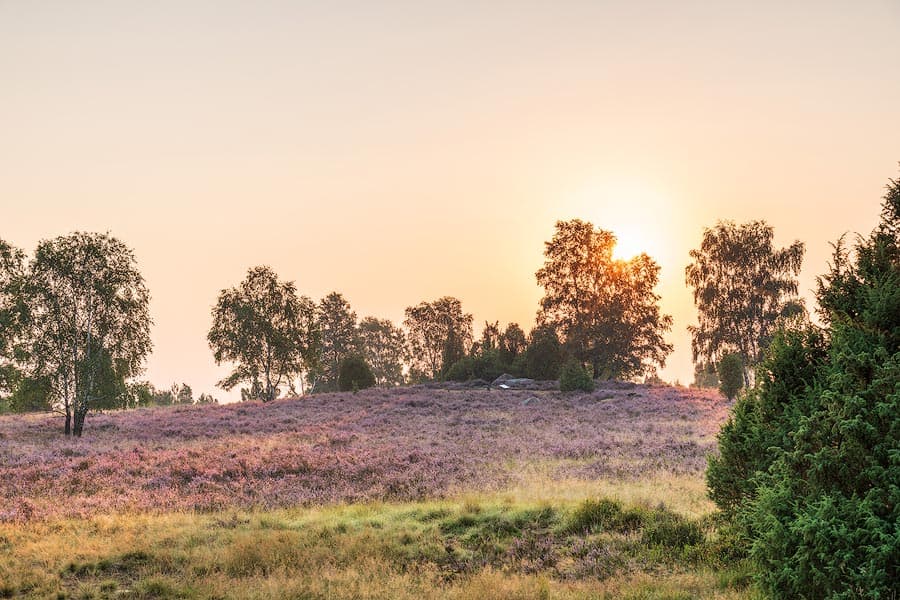
©Dennis Karjetta
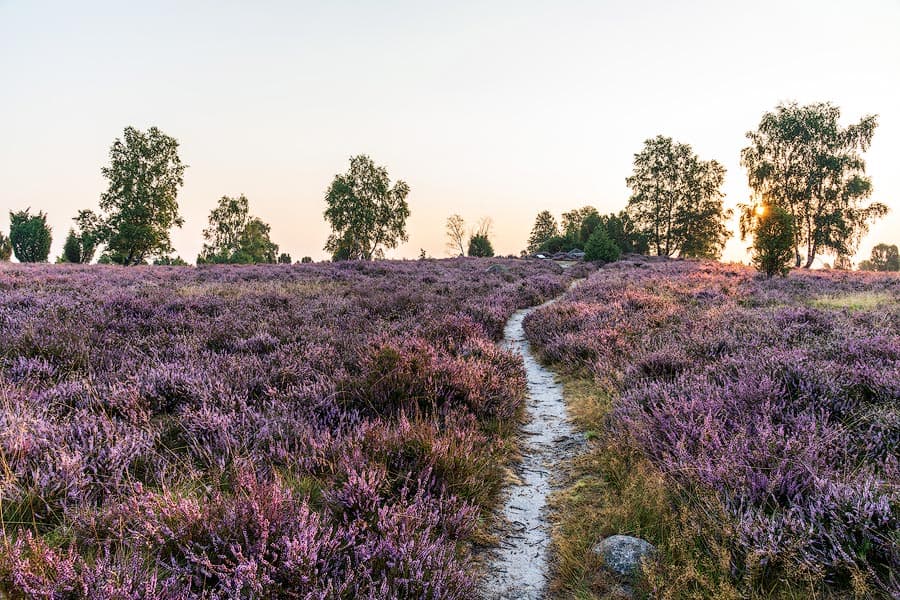
©Dennis Karjetta
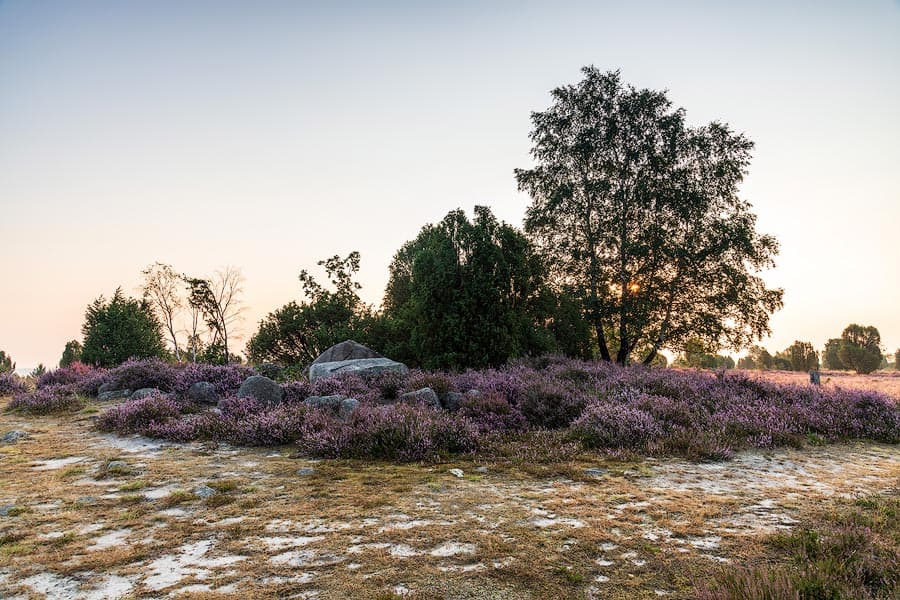
©Dennis Karjetta
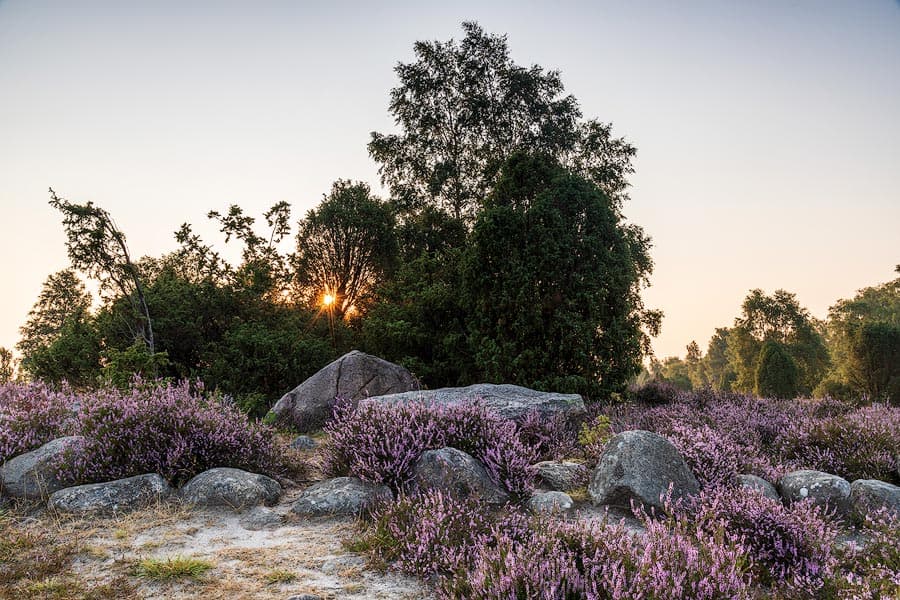
Im autofreien Naturschutzgebiet Lüneburger Heide, nahe Wilsede und der Kreuzung nach Volkwardingen, liegt eine malerische Gruppe von Findlingssteinen mit knorrigen Wacholdern auf einem kleinen Hügel.
Diese Stelle gelangte zu Berühmtheit und wird als Hannibals Grab bezeichnet.
Doch wie kann diese Steinformation den Namen eines der berühmtesten Feldherren der Antike tragen, obwohl dieser nie in der Lüneburger Heide war? Er schaffte es mit seinen Elefanten über die Alpen, aber er ist definitiv nicht in der Lüneburger Heide begraben.
1893 malte der berühmte deutsche Maler Eugen Bracht auf einer Türkeireise ein Bild vom Grab des karthagischen Feldherrn Hannibal. Bei einer Kunstausstellung in den 20er Jahren, auf der auch dieses Bild gezeigt wurde, hatten Besucher das Gefühl, die Stelle zu kennen.
Man verglich das Motiv und stellte fest, dass die Ähnlichkeit mit der Steinformation aus der Lüneburger Heide bei Wilsede verblüffend war. Nun drängte sich die Vermutung auf, dass Eugen Bracht nie in der Türkei war, sondern das Bild in der Lüneburger Heide gemalt hatte.
Seitdem trägt diese Steinformation den Namen Hannibals Grab und ist bis heute ein beliebtes Ausflugsziel im Naturschutzgebiet der Lüneburger Heide.
Eugen Bracht hat übrigens viele Motive in der Lüneburger Heide gemalt.
Wie finde ich diese Stelle?
Gehen Sie aus Wilsede heraus in Richtung Döhle / Volkwardingen über das Kopfsteinpflaster. An der Kreuzung, an der der Weg sich Richtung Volkwardingen und Richtung Döhle teilt, bleiben Sie geradeaus Richtung Döhle. Nicht weit nach der Kreuzung kommt Hannibals Grab auf der linken Seite. Sie erkennen es an den Steinen und gehen ein paar Meter über den Weg in die Heide hinein.
Auf der Google Maps ist Hannibals Grab angelegt, Sie können damit navigieren.

